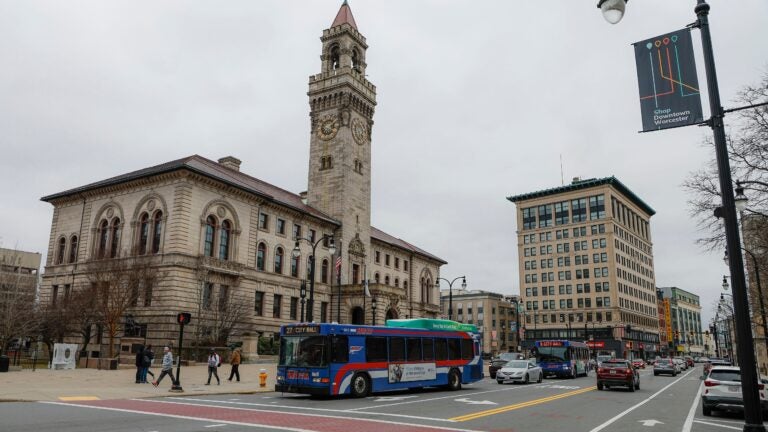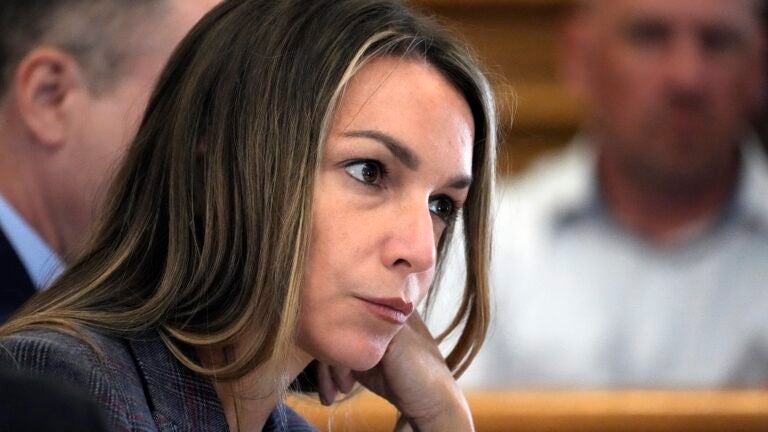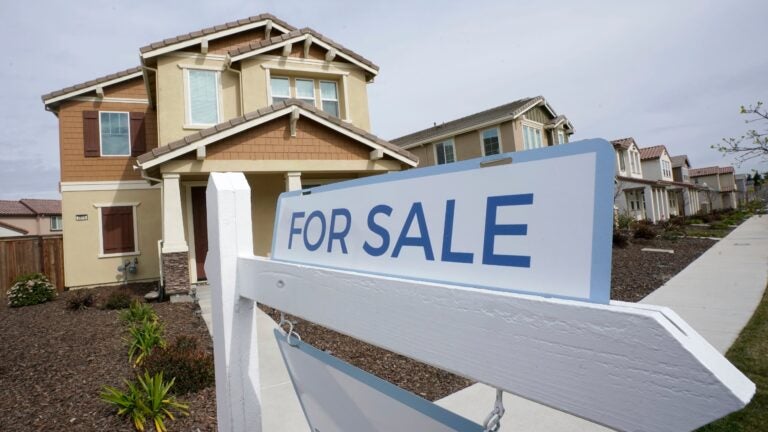Federal reserve now projects rate increases in 2023
The Federal Reserve left rates unchanged and said it would continue buying bonds as the economy continues to recover.

Federal Reserve officials signaled Wednesday that they expected to raise interest rates from rock bottom sooner than they had previously forecast and that they were taking baby steps toward reducing their vast bond purchases — tweaks that, together, demonstrated their increasing confidence that the economy would rebound robustly from the pandemic.
Fed policymakers expect to make two interest rate increases by the end of 2023, the central bank’s updated summary of economic projections showed Wednesday. Previously, more than half of officials had anticipated that rates would stay near zero, where they have been since March 2020, into at least 2024. Officials now see rates rising to 0.6% by the end of 2023, up from 0.1%.
The Fed chair, Jerome Powell, played down the significance of those tentative rate forecasts during a post-meeting news conference, emphasizing that borrowing costs would remain low for a long time. But he also spoke optimistically about the economic outlook and said the central bank was beginning to discuss when and how it should slow its other key monetary policy: huge purchases of government-backed debt that it carries out to stoke demand.
The central bank’s increasingly buoyant take on the economy partly reflects that vaccines have become widespread in the United States, diminishing the risk that another wave of coronavirus infections will drive the economy back to a standstill. As businesses are able to reopen, the labor market is healing, prices are rebounding from a pandemic-era slump, and overall growth is surging.
“Progress on vaccinations has reduced the spread of COVID-19 in the United States,” the Fed said in its statement, which contained several upbeat revisions. “Progress on vaccinations will likely continue to reduce the effects of the public health crisis on the economy, but risks to the economic outlook remain.”
Powell sounded more positive about the outlook than he had just a few months ago, though he retained a note of caution. “We’re going to be in a very strong labor market pretty quickly here,” he said, while adding that the Fed was in no rush to raise interest rates and that “whenever liftoff comes, policy will remain highly accommodative.”
He warned later that the economy was “not out of the woods at this point, and it would be premature to declare victory.”
Policymakers on Wednesday left interest rates near zero, where they have been since March 2020. They also promised to continue buying about $120 billion per month in Treasury securities and other government-backed bonds. Low rates and bond purchases work together to allow money to flow easily through the economy, fueling stronger demand that can help speed up growth and job market healing.
But it was the shift in tone that captured investors’ attention.
The stock market, which had been relatively flat through the morning, dropped after the central bank released its projections. The S&P 500 closed the day down 0.5%. Bond markets also shifted, with the yield on the 10-year Treasury note rising sharply to 1.56%, as traders priced in the chance that the Fed could raise interest rates slightly more quickly than previously expected.
“They basically took out the downsides from the virus,” Michelle Meyer, head of U.S. economics at Bank of America, said of the Fed’s statement.
Economic data have offered a series of surprises since the Fed met in late April and since it last released economic projections in March. Employers have been hiring more slowly than they were this spring as job openings abound but it takes workers time to fill them. Inflation data have come in faster than officials had expected, with prices for used cars rising and airplane fares snapping back, and consumer and market expectations for future inflation have climbed.
But the Fed continued to call those price increases largely “transitory” in its new statement, and Powell reiterated that he and his colleagues expected price gains to moderate over time as bottlenecks were resolved, bringing consumer demand back into balance with what producers could supply.
“Our expectation is that these high inflation readings that we’re seeing now will start to abate,” Powell said, adding that if prices moved up in a way that was inconsistent with the Fed’s goal, central bankers would be prepared to react by reducing monetary policy support.
“There’s a lot of uncertainty,” Powell acknowledged. If inflation or expectations jump “materially above what we would see as consistent with our goals, and persistently so, we wouldn’t hesitate to use our tools to address that.”
Officials have repeatedly pledged to continue to support the economy until the pandemic shock is well behind the United States. Specifically, they have said that they want to achieve “substantial” progress toward their two economic goals — maximum employment and stable inflation — before slowing their bond purchases. The bar for raising interest rates is even higher. Officials have said they want to see the job market back at full strength and inflation on track to average 2% over time before they will lift interest rates from rock bottom.
Powell suggested Wednesday that while the economy had not yet cleared the “substantial” progress hurdle, it was getting closer.
“While reaching the standard of ‘substantial further progress’ is still a ways off, participants expect that progress will continue,” Powell said. He said that the committee was now preparing to talk about a plan for tapering off its bond buying, adding “we will provide advance notice before announcing any decision to make changes to our purchases.”
Rate increases, he said, remain far in the future — though perhaps not quite as distant as before, if the forecasts are right.
Based on central bankers’ fresh projections released Wednesday, the median Fed official expected to achieve the central bank’s goals and lift rates by late 2023. The Fed’s interest rate projections showed that more than half of its 18 officials expected rate increases by the end of that year. More, but not quite half, expected an increase or two in 2022.
That markup came as Fed officials offered headier economic forecasts. They now see growth coming in stronger in 2021 and expect inflation to average 3.4% in the final three months of the year. They expect that headline inflation gauge to retreat quickly, however, falling to 2.1% next year and 2.2% in 2023.
Washington is paying close attention to the Fed’s views on inflation as President Joe Biden tries to rally congressional support for his $4 trillion economic agenda. A senior White House official seized on the Fed’s revised economic forecasts, saying that they showed Biden’s policies so far were working to heal the economy and supported the idea that inflation would be short-lived.
Persistently higher inflation could make it more difficult for Democrats to make a case for additional spending on priorities like infrastructure, even though the suggested outlays would trickle out over time. Republicans have blasted the spike in prices as a sign of economic mismanagement, while the White House maintains that higher prices are likely to fade.
“The current burst of inflation we’ve seen reflects the difficulties of reopening an economy that’s been shut down,” Janet Yellen, the Treasury secretary, said in response to lawmaker questions during testimony before the Senate Finance Committee earlier Wednesday.
Some Republican politicians have questioned whether emergency monetary policy settings remain necessary as the economy reopens and growth rebounds.
The Fed has been clear that while it may be starting to lay the early groundwork, it is in no rush to withdraw its support quickly.
That patience owes in part to its new policy strategy. The economy experienced years of plodding growth after the 2007-09 recession, and inflation drifted lower, threatening a downward spiral. In light of that, the Fed adopted a new approach to monetary policy last summer that shoots for periods of slightly higher inflation while aiming for full employment as an “broad-based and inclusive” goal.
Given its new framework, the Fed is willing to tolerate periods of inflation above 2%. That is relevant now, given that its preferred inflation gauge came in at 3.6% in April compared with the previous year and is likely to jump even higher in May. The more up-to-date Consumer Price Index was up 5% in the year through last month, partly as the figures were compared with very low readings last year.
If inflation were to take off in a lasting way — contrary to the Fed’s expectations — and the central bank were forced to lift interest rates to slow the economy and tame price pressures, that could be bad news. Rapid rate adjustments have a track record of causing recessions, which throw vulnerable workers out of jobs.
But the Fed tries to balance risks when setting policy, and so far, it has seen the risk of pulling back support early as the one to avoid. Millions of jobs are still missing since the start of the pandemic, and monetary policy could help to keep the economy recovering briskly so that displaced employees have a better chance of finding new work.
“There’s still a long way to go,” David Beckworth, a senior research fellow at the Mercatus Center at George Mason University, said of the path ahead for the Fed. “This is the next phase, and it’s a lighter-touch phase, but it’s not the beginning of a tightening cycle.”






Conversation
This discussion has ended. Please join elsewhere on Boston.com